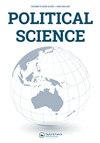委内瑞拉走向威权主义的道路
IF 1.2
4区 社会学
Q3 POLITICAL SCIENCE
引用次数: 0
摘要
1958年,在几股政治和社会力量共同反对马科斯·潘萨雷兹·吉米内斯的独裁统治之后,委内瑞拉正式实现了民主化。这个民主国家的发展很快,部分原因是由于石油财富带来的经济快速增长和社会流动性。1958年10月,三个政党Acción Democrática、Organización Política独立选举委员会和Unión共和Democrática签署了一项政治协定,俗称Punto Fijo。在这份文件中,所有政党都承诺尊重选举结果,并建立一个公平代表各政治力量的民族团结政府。1961年,新宪法巩固了新生的代议制民主的原则。然而,随着时间的推移,经济不平等、权力集中化和庇护关系导致该国陷入制度危机。在经历了1983年本国货币的大幅贬值和财政调整之后,政府在1989年提出了宏观经济调整,包括削减国内汽油补贴。这导致了全国范围内的大规模骚乱。这一事件在历史上被称为El Caracazo或El Sacudón。在经济和社会动荡中,一位名叫雨果Chávez的中校和其他军事领导人于1992年发动了军事政变。虽然政变没有成功地将总统赶下台,但Chávez在全国范围内已经广为人知。在入狱两年并成立了一个政党之后,雨果Chávez在1998年赢得了总统选举。关于委内瑞拉政治的当代文献是分期的,强调前和post-Chávez时期之间的划分。分析1998年之前委内瑞拉的大部分工作都集中在具体问题上,如经济和石油食利者主义、El Caracazo和政党制度的特点。相反,对Chávez政府的最初描述主要强调了他的魅力领导。后来的作品,特别是在2002年之后,更多地关注Chávez政权的专制特征,例如专制的法律主义,一党专制政权的霸权,委内瑞拉政府与世界上其他非民主领导人之间的联系,以及对媒体和新闻界的攻击。尽管专家们对委内瑞拉存在何种类型的威权主义意见不一,即使人们可以将Chávez统治的头几年定性为威权主义,但自2013年Nicolás马杜罗担任总统以来,委内瑞拉政权的威权主义特征比以往任何时候都更加明显。本文章由计算机程序翻译,如有差异,请以英文原文为准。
The Path Toward Authoritarianism in Venezuela
Venezuela formally democratized in 1958 after several political and social forces fought together against the dictatorship of Marcos Pérez Jiménez. The evolution of this democracy was fast, partly due to the rapid economic growth and social mobility that prevailed as a result of oil wealth. In October 1958, three political parties, Acción Democrática, Comité de Organización Política Electoral Independiente, and Unión Republicana Democrática, signed a political pact, commonly known as Punto Fijo. In this document, all political parties committed themselves to respect the results of the elections and establish a government of national unity with equitable representation of the political forces. In 1961 a new constitution consolidated the principles of the nascent representative democracy. However, over time, economic inequality, power centralism, and patronage relationships led the country to fall into an institutional crisis. After a strong devaluation of the national currency in 1983, a critical event known as Viernes Negro, and fiscal adjustments, the government proposed macroeconomic adjustments in 1989, including cuts in subsidies on domestic gasoline. This resulted in massive riots across the country. This episode is historically known as El Caracazo or El Sacudón. Amid the economic and social turmoil, a lieutenant colonel named Hugo Chávez and other military leaders launched a military coup in 1992. Although the coup was unsuccessful in removing the president from power, Chávez became known at the national level. After two years in prison and launching a political party, Hugo Chávez won the presidential election in 1998. The contemporary literature on Venezuelan politics is periodized, emphasizing the division between the pre- and post-Chávez periods. Much of the work analyzing Venezuela prior to 1998 focuses on specific issues such as the economy and oil rentierism, El Caracazo, and the characteristics of the party system. Contrary, initial accounts of Chávez’s government mostly highlight his charismatic leadership. Later works, especially after the year 2002, focus much more on the authoritarian features of Chávez regime related to, for example, autocratic legalism, the supremacy of one-party regime, the connections between the government of Venezuela and other nondemocratic leaders in the world, and attacks against media and the press. Although experts do not agree about what type of authoritarianism exists is Venezuela, or even if one can characterize the first years of Chávez’s rule as an authoritarian one, since 2013, with Nicolás Maduro as president, the authoritarian features of the Venezuelan political regime are more manifest than ever.
求助全文
通过发布文献求助,成功后即可免费获取论文全文。
去求助
来源期刊

Political Science
POLITICAL SCIENCE-
CiteScore
0.90
自引率
0.00%
发文量
13
期刊介绍:
Political Science publishes high quality original scholarly works in the broad field of political science. Submission of articles with a regional focus on New Zealand and the Asia-Pacific is particularly encouraged, but content is not limited to this focus. Contributions are invited from across the political science discipline, including from the fields of international relations, comparative politics, political theory and public administration. Proposals for collections of articles on a common theme or debate to be published as special issues are welcome, as well as individual submissions.
 求助内容:
求助内容: 应助结果提醒方式:
应助结果提醒方式:


